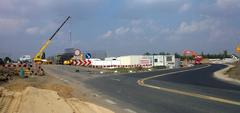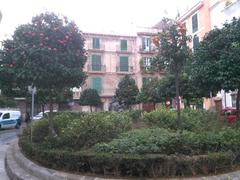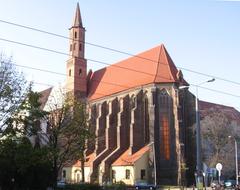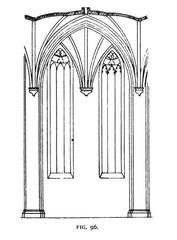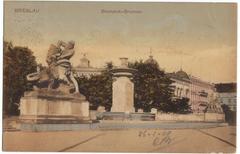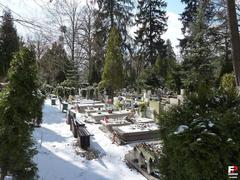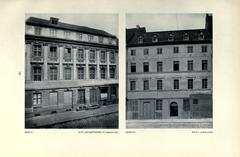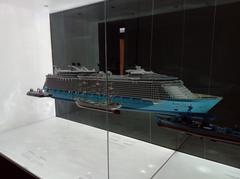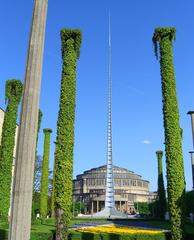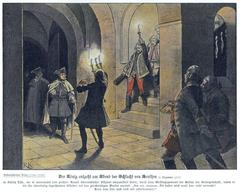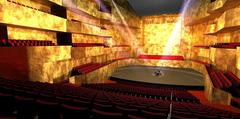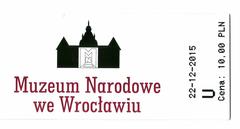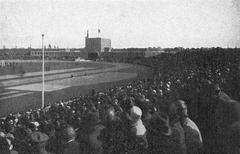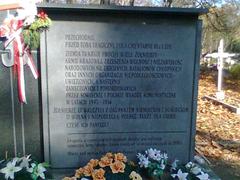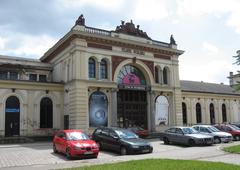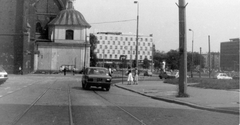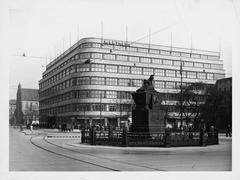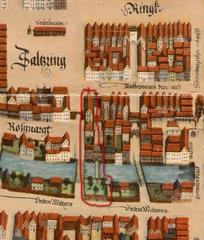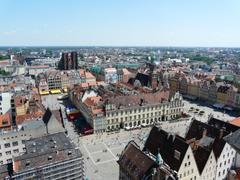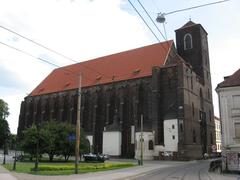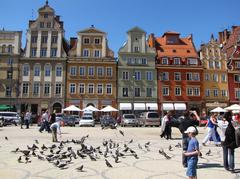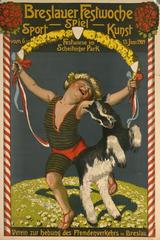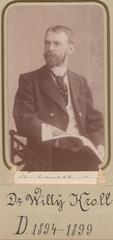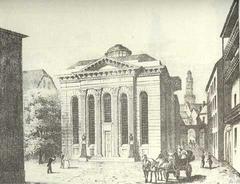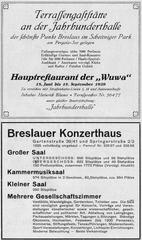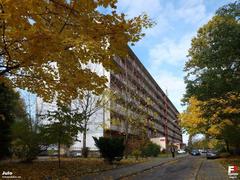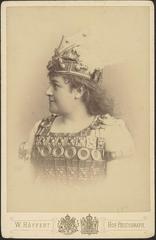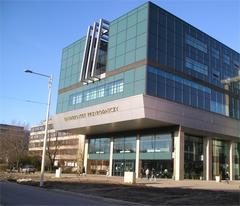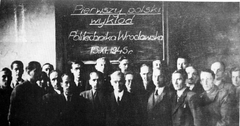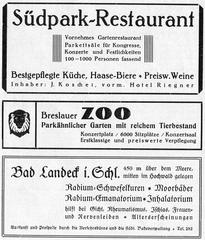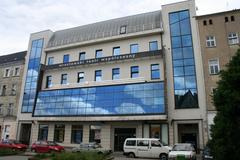Visiting Dworzec Wrocław Świebodzki: History, Tickets, and Tips
Date: 19/07/2024
Introduction
Dworzec Wrocław Świebodzki, one of the oldest railway stations in Wrocław, Poland, stands as a magnificent relic of the 19th-century architectural and industrial boom. Inaugurated on October 29, 1842, this station initially served as the terminus for the Wrocław-Świebodzice railway line, a crucial element in the burgeoning Silesian region’s transport network. Designed by Carl Lüdecke, the station’s neoclassical architecture, characterized by its symmetrical façade, large arched windows, and intricate decorative elements, is a testament to the grandeur of the era (Exploring Dworzec Wrocław Świebodzki - History, Visiting Hours, and Tickets). Over the decades, Dworzec Wrocław Świebodzki has evolved from a bustling transportation hub to a vibrant cultural and commercial space. Today, it hosts various events, exhibitions, and markets, seamlessly blending its historical significance with contemporary urban life. This guide aims to provide a comprehensive overview of Dworzec Wrocław Świebodzki, covering its rich history, visitor information, travel tips, and nearby attractions, ensuring a memorable experience for every visitor.
Table of Contents
- Introduction
- History of Dworzec Wrocław Świebodzki
- Visitor Information
- Travel Tips and Nearby Attractions
- Special Events and Guided Tours
- FAQ
- Conclusion
History of Dworzec Wrocław Świebodzki
Early Beginnings
Dworzec Wrocław Świebodzki, also known as Wrocław Świebodzki Station, is one of the oldest railway stations in Wrocław, Poland. The station was inaugurated on October 29, 1842, marking a significant milestone in the development of the railway network in the region. It was initially constructed as the terminus of the Wrocław-Świebodzice railway line, which was one of the earliest railway lines in Poland. The station’s establishment was part of a broader effort to enhance transportation and industrial connectivity in the Silesian region.
Architectural Significance
The architectural design of Dworzec Wrocław Świebodzki is a testament to the grandeur of 19th-century railway architecture. The station building, designed by Carl Lüdecke, features a neoclassical style with a symmetrical façade, large arched windows, and intricate decorative elements. The use of red brick and sandstone in the construction adds to the aesthetic appeal of the structure. The station’s design reflects the architectural trends of the period and showcases the importance of railway stations as symbols of progress and modernity.
Role in Industrialization
During the 19th century, Wrocław Świebodzki Station played a crucial role in the industrialization of Wrocław and the surrounding regions. The station facilitated the efficient transportation of goods and raw materials, contributing to the growth of industries such as coal mining, textiles, and manufacturing. The railway line connected Wrocław with other industrial hubs, enabling the exchange of products and fostering economic development. The station’s strategic location and connectivity made it a vital component of the region’s industrial infrastructure.
Wartime Impact
The history of Dworzec Wrocław Świebodzki is also marked by its experiences during the tumultuous periods of the World Wars. During World War I, the station served as a critical logistics hub for the movement of troops and military supplies. The station’s infrastructure was heavily utilized, and it witnessed significant activity during the war years. In World War II, the station again played a strategic role, but it also suffered damage due to bombings and military operations. The post-war period saw efforts to rebuild and restore the station to its former glory.
Post-War Developments
After World War II, Wrocław Świebodzki Station underwent several changes in its operational status and infrastructure. The station continued to serve as a passenger and freight terminal, but its significance gradually declined with the development of new railway lines and stations in Wrocław. In the latter half of the 20th century, the station’s role shifted more towards freight services, and passenger services were eventually discontinued in the 1990s. Despite these changes, the station building remained an iconic landmark in Wrocław.
Preservation and Modern Use
In recent years, there have been concerted efforts to preserve and repurpose Dworzec Wrocław Świebodzki. The station building has been recognized for its historical and architectural value, leading to initiatives aimed at its conservation. Today, the station serves as a cultural and commercial space, hosting various events, exhibitions, and markets. The transformation of the station into a multifunctional venue has breathed new life into the historic structure, allowing it to remain a vibrant part of Wrocław’s urban landscape.
Cultural Significance
Dworzec Wrocław Świebodzki holds a special place in the cultural heritage of Wrocław. The station’s history is intertwined with the city’s development and its role as a transportation hub. The building itself is a symbol of the architectural and engineering achievements of the 19th century. The station’s preservation and adaptive reuse reflect a broader trend of valuing and integrating historical landmarks into contemporary urban life. The station continues to be a point of interest for both locals and tourists, offering a glimpse into Wrocław’s rich historical tapestry.
Visitor Information
Visiting Hours
Dworzec Wrocław Świebodzki is open to visitors daily from 10:00 AM to 6:00 PM. It is advisable to check the official website for any changes in opening hours, especially during public holidays and special events.
Ticket Prices
Entry to the station building is free. However, certain events or exhibitions held within the station may require a ticket. Prices for these can vary, so it is recommended to visit the official website for the latest ticket information.
Accessibility
The station is accessible to visitors with disabilities. Ramps and elevators are available to ensure easy access to all areas of the station.
Travel Tips and Nearby Attractions
Nearby Attractions
While visiting Dworzec Wrocław Świebodzki, consider exploring nearby attractions such as the Wrocław Market Square, the Wrocław Opera House, and the National Museum.
Best Times to Visit
The best time to visit is during spring and summer when the weather is pleasant, and the station often hosts outdoor events and markets.
Photography
The station’s neoclassical architecture provides excellent photography opportunities. Don’t miss capturing the intricate details of the façade and the large arched windows.
Special Events and Guided Tours
Dworzec Wrocław Świebodzki hosts a variety of special events throughout the year, including cultural festivals, art exhibitions, and historical reenactments. Guided tours are available for those interested in a more in-depth exploration of the station’s history and architecture. These tours can be booked in advance through the official website.
FAQ
Q: What are the visiting hours for Dworzec Wrocław Świebodzki? A: The station is open daily from 10:00 AM to 6:00 PM.
Q: Is there an entry fee for Dworzec Wrocław Świebodzki? A: Entry to the station building is free, but certain events or exhibitions may require a ticket.
Q: Are guided tours available at Dworzec Wrocław Świebodzki? A: Yes, guided tours are available and can be booked through the official website.
Q: What are some nearby attractions to visit? A: Nearby attractions include the Wrocław Market Square, the Wrocław Opera House, and the National Museum.
Conclusion
Dworzec Wrocław Świebodzki is not just a historical railway station but a cultural landmark that continues to play a vital role in Wrocław’s urban landscape. Whether you are a history buff, an architecture enthusiast, or just a curious traveler, a visit to this iconic station is a must. For more detailed information, visit the official website or explore historical archives available at the Wrocław City Archives.
Call to Action
To stay updated on the latest events and exhibitions at Dworzec Wrocław Świebodzki, download the mobile app Audiala, or follow us on social media. Don’t forget to check out other related posts on our site for more exciting travel tips and historical insights.
